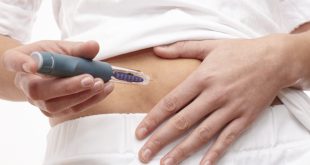Hypoglycemia, or low blood glucose, occurs when blood glucose levels fall below 4 mmol/L, which is too low to provide the energy your body needs for proper functioning. Hypoglycemia can be a side effect of insulin and of many oral diabetes medications, although not all of them. Managing hypoglycemia can be achieved with some knowledge about detecting symptoms and understanding ways to treat it. Read our article Balancing medications and hypoglycemia - can it be done?
If the treatment plan includes a medication with a higher chance of causing hypoglycemia, be prepared to manage the low blood sugar. It will almost certainly occur at some point, no matter how much care is given to diabetes management.
The best advice is to learn to recognize the signs and check blood glucose levels, so that it can be caught early and quickly treated.
Signs of hypoglycemia include:
- Feeling shaky or weak
- Feeling dizzy
- Sweating
- Hunger
- Headache
- Sudden mood swings , irritability anxiety
- Pale skin
- Clumsiness or jerky movements
- Feeling tingly or numbness around the mouth or tongue
- Seizures
- Lack of consciousness
If blood glucose checking confirms hypoglycemia, your loved one should immediately take 15 grams of sugar or carbohydrates to raise blood glucose.
Suitable foods include the following:
15g glucose in the form of glucose tablets (this is the preferred way)
175 ml (3/4 cup) juice or regular soft drink
6 Life Savers®
15 mL (1 tablespoon) of honey
15 mL (3 teaspoons) of sugar dissolved in water.
After 15 minutes, check blood glucose levels again. If it is still too low, the treatment should be repeated.
This is a good place for the reminder that you should always wear a MedicAlert® bracelet. Untreated hypoglycemia can lead to severe disorientation, seizure or lack of consciousness.
If insulin is being used, family and friends should understand how to use glucagon in case of an emergency. If your loved one passes out, glucagon should immediately be injected. If glucagon is not available, call your emergency number for an ambulance. Discuss the use of glucagon with a diabetes healthcare team member.
 Diabetes Care Community Learn, connect and care
Diabetes Care Community Learn, connect and care




